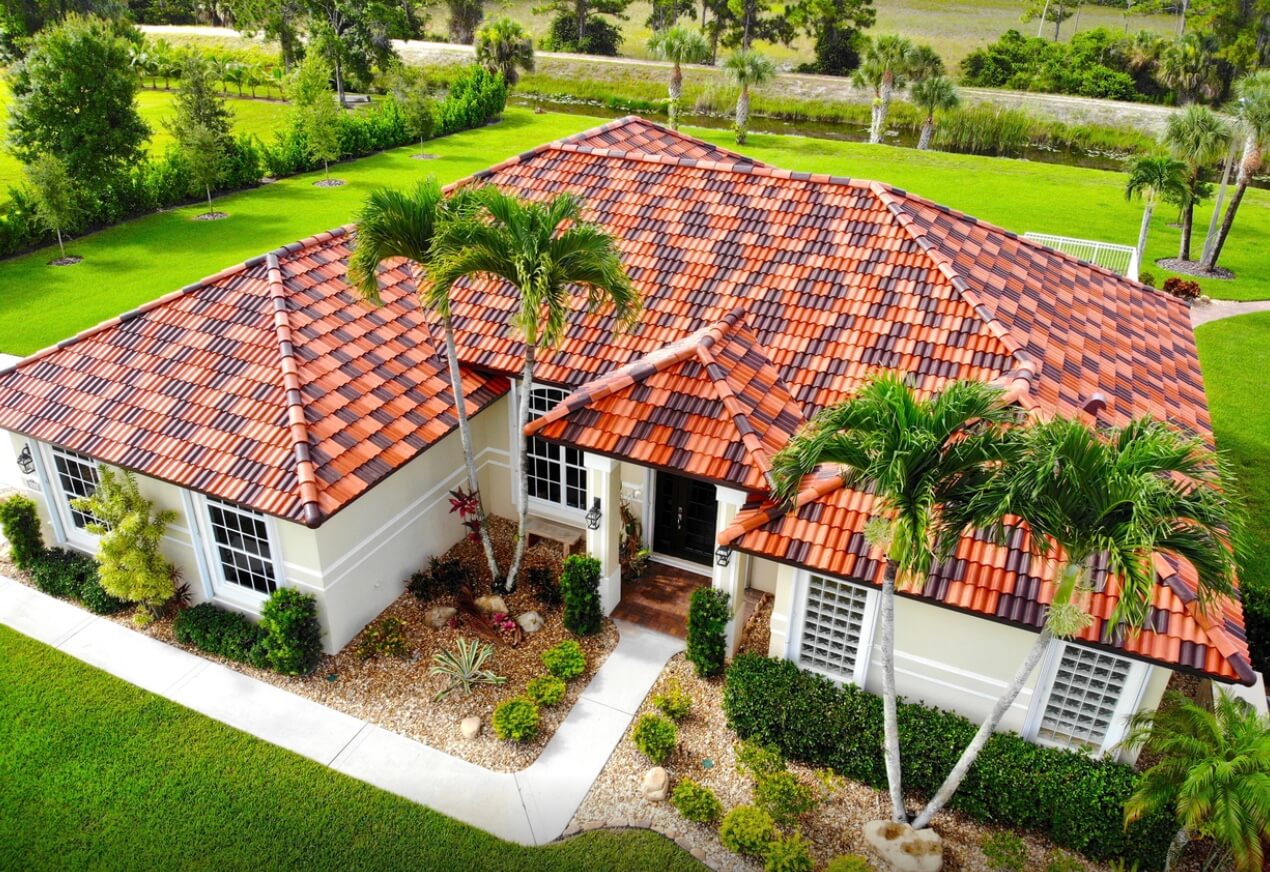
In the world of roofing, everyone wants the perfect blend of style, durability, and energy efficiency. *tile roofs enter the chat* These roof types are charming and timeless options that have successfully sheltered homes for centuries. But are they just a pretty face, or do they actually help you save on energy bills, too? Spoiler alert: they might just be your roof’s new best friend.
At RoofCrafters, we've seen it all—roofs that bake like an oven in summer and others that seem to have a mind of their own. With over 30 years in the business, we've learned which roofing systems mesh well with energy efficiency and which don't. Our team of experts knows the ins and outs of every roofing material, especially tile roofs, and we’re here to share our thoughts on why tile roofs might just be the energy-saving materials you’ve been looking for.
So, grab your notes as we dive into the world of tile roofs. We'll explore their energy efficiency levels, which are the smartest options, and help you decide if they’re the right fit for your home. Who knew roofing could be this fun? Let’s get started!
The Anatomy of a Tile Roof
Tile roofs are made from either concrete or clay, and both materials bring their own set of benefits. Concrete tiles are created by mixing cement, sand, and water, which are then molded under high pressure and heat. Clay tiles are formed from natural clay that’s shaped and baked in a kiln at high temperatures. These processes result in highly durable, dense tiles that can withstand extreme weather conditions and last for decades.

One of the key reasons tile roofs are energy efficient is because of their natural thermal properties. Both concrete and clay have excellent thermal mass, meaning they can absorb and store heat energy during the day and release it slowly during the cooler nights.
This helps to moderate indoor temperatures, reducing the need for air conditioning in the summer and heating in the winter. Essentially, tile roofs act like a natural insulator, keeping your home comfortable year-round and lowering your energy bills.
The design of tile roofs also contributes to their energy efficiency. The curved shape of the tiles allows for better airflow, creating a natural ventilation system. This airflow reduces heat transfer into the attic, further cooling the house during hot days.
Tiles can also be installed with a small gap between them and the roof deck, which provides an extra layer of insulation. This design feature helps in preventing heat from penetrating into your living spaces.
Tile roofs can also be coated with special reflective finishes that bounce back more of the sun’s rays, preventing them from being absorbed as heat. These cool roof coatings can significantly improve the roof’s ability to reflect solar energy, which is especially beneficial in sunny, hot climates. By reflecting the sun’s energy, these coatings help keep your home cooler and reduce the load on your air conditioning system.
Another important factor is the sustainability aspect of tile roofs. They're made from natural materials that can be recycled, reducing their environmental impact. Their long lifespan means fewer roof replacements over time, which conserves resources and reduces waste. A well-maintained tile roof can last up to 100 years, making it a smart, long-term investment for both your wallet and the planet!
Are Some Better Than Others?
You may be surprised to learn that not all tile roofs are created equal in terms of energy efficiency! The material, color, and design of the tiles can significantly impact how well they insulate your home and manage heat.

Concrete and clay tiles are the two primary materials used in tile roofing. As mentioned, both have excellent thermal mass, but clay tiles tend to have a slight edge in energy efficiency. This is because clay is more porous and can breathe better, which helps in naturally regulating temperature.
However, concrete tiles are still highly effective and can be treated with reflective coatings that enhance their energy efficiency. These coatings reflect more sunlight, reducing the amount of heat absorbed by the roof and keeping your home cooler.
The color of the tiles also plays a crucial role. Lighter-colored tiles reflect more sunlight than darker ones, which means less heat is absorbed by the roof. This can significantly lower the temperature inside your home during hot summer months.

For instance, a white or light-colored tile roof can reflect up to 80% of the sun's rays, while a dark-colored roof might only reflect 10-20%. Choosing lighter colors can thus make a big difference in energy savings.
The design and shape of the tiles can impact energy efficiency too. S-shaped and curved tiles are particularly effective because they create natural ventilation channels that allow air to flow between the tiles and the roof deck.
This airflow helps to dissipate heat and reduce the temperature inside your attic, which can have a cooling effect on the entire house. Flat tiles, while aesthetically pleasing, may not offer the same level of natural ventilation.
Tiles with built-in reflective properties are another excellent choice. These tiles are designed to reflect more sunlight and can often be found in cool roof products. Cool roof tiles have a higher solar reflectance and thermal emittance, meaning they reflect more sunlight and release absorbed heat more efficiently. This can make a significant difference in reducing cooling costs and improving overall energy efficiency.
The installation method also affects energy efficiency. Installing tiles with a slight gap between them and the roof deck can enhance ventilation and insulation. This method, known as "battens," allows for better air circulation and can help in maintaining a cooler roof surface.
Proper installation is key to maximizing the energy efficiency benefits of any tile roof, so it's essential to work with experienced roofing professionals, like RoofCrafters, who understand these techniques.
Save Energy with Style
Choosing the right tile roof can enhance your home's energy efficiency while adding a touch of elegance to your living space. Clay and concrete tiles, especially those with light colors and reflective coatings, can help maintain a cooler home by reflecting more sunlight and reducing heat absorption!
But remember that the energy-saving benefits of tile roofs extend beyond their materials and colors. The installation method plays a crucial role in maximizing efficiency. Properly installed tiles with ventilation gaps can improve air circulation and insulation, further contributing to a cooler indoor environment.
At RoofCrafters, we understand the importance of both style and energy efficiency. Our team of experienced professionals is here to help you choose the best tile roof for your needs and ensure it is installed correctly. Schedule an inspection with us to explore your options and learn how you can save energy with style!
My name is Anthony, and I am the lead estimator of RoofCrafters’ Georgia/South Carolina division. The roof is the most important part of a structure, and people count on that to protect themselves and their families. That is one of the many reasons why I love my job and enjoy coming to work every day. The continuous training, honesty, and providing the customer with the Roofcrafters experience is what makes me the best in the business.




